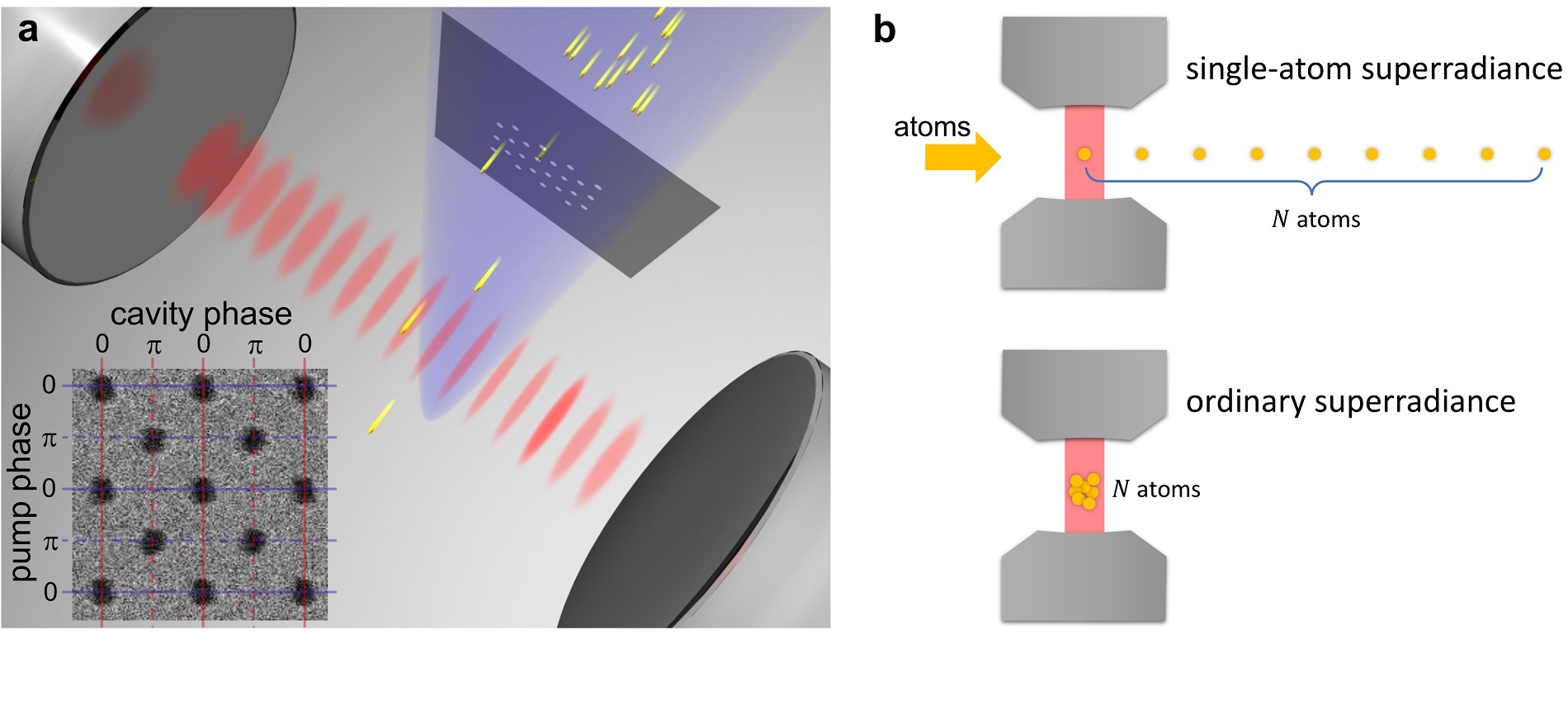December 21, 2017
Physicists from Seoul National University, South Korea, have realized superradiance with single atoms in a cavity and demonstrated thresholdless lasing by using it.
Superradiance originally refers to the collective emission of densely packed quantum emitters. It is fundamentally different from ordinary spontaneous emission in that its emission power scales as the square of the number of emitters whereas it does linearly in the ordinary spontaneous emission. Such enhanced matter-light interaction has drawn much interest since it would enable efficient photonics devices and quantum interfaces.
Recently several research groups have demonstrated new approaches to superradiance. A laser pulse is introduced to an ensemble of millions of atoms to imprint phase correlation and thus to induce an immediate superradiant output. However, the output occurred in the same direction as the input, making it difficult to separate them. In another approach, a few emitters are prepared in a cavity and their quantum states are individually manipulated to exhibit controlled collective emission. However, due to technical difficulties, the number of emitters participating in superradiance has been limited to two so far.
In a paper published by the journal Science, the research team led by Prof. Kyungwon An reports observation of coherent superradiance made by single atoms in a cavity in such a way that the output is completely separated from the input and tens of atoms participate in superradiance as they control atomic states individually.
In their experiment, single two-level atoms are prepared in the same quantum superposition state and then made to traverse a cavity one by one. A single atom in the cavity then emits a photon collectively with the past atoms that have already gone through the cavity. Such collective interaction among time-separated atoms has never been observed before. The interaction is one-sided or chiral in that the preceding atoms can affect the following atoms, not vice versa.
They observe the emission power increases as the square of the number N of the atoms traversing the cavity during the cavity-field decay time. The N-squared dependence occurs even when the number of photons in the cavity exceeds unity without exhibiting any lasing threshold. So, their results can also be viewed as thresholdless lasing. Interestingly, the so-called beta factor, the fraction of spontaneous emission directed to the cavity mode from one excited atom in the cavity, is only 0.03, much smaller than unity, and thus cannot explain their thresholdless lasing, which is made possible by the atomic collective emission. In fact, the smaller beta factor is the better for their thresholdless lasing: currently, the largest N is about 30, but it can be easily scaled up further by reducing the beta factor more.
They prepared the single atoms in the same quantum superposition state by controlling their position in a nanometer resolution with a nanohole-array atom aperture, first developed in their previous work reported in Nature Communications in 2014.
This novel form of superradiance is fundamentally interesting and may lead to important practical applications. The chiral interaction feature can be utilized to build a chiral atom-atom interaction system to study quantum many-body chirality physics. The phase-controlled many-atom superradiant interaction based on the nanohole-array technique can be used to generate non-classical field state such as Schrödinger cat states. Greatly enhanced emission of single atoms can be used to build efficient atom-photon quantum interfaces. Moreover, the thresholdless lasing property can be utilized in making more efficient lasers.
Their research results were published online by the journal Science on Thursday, 21 December, 2017. The authors of the paper are Junki Kim, Daeho Yang, Seunghoon Oh and Kyungwon An. DOI information of the paper published via First Release is as follows: http://science.sciencemag.org/lookup/doi/10.1126/science.aar2179.















